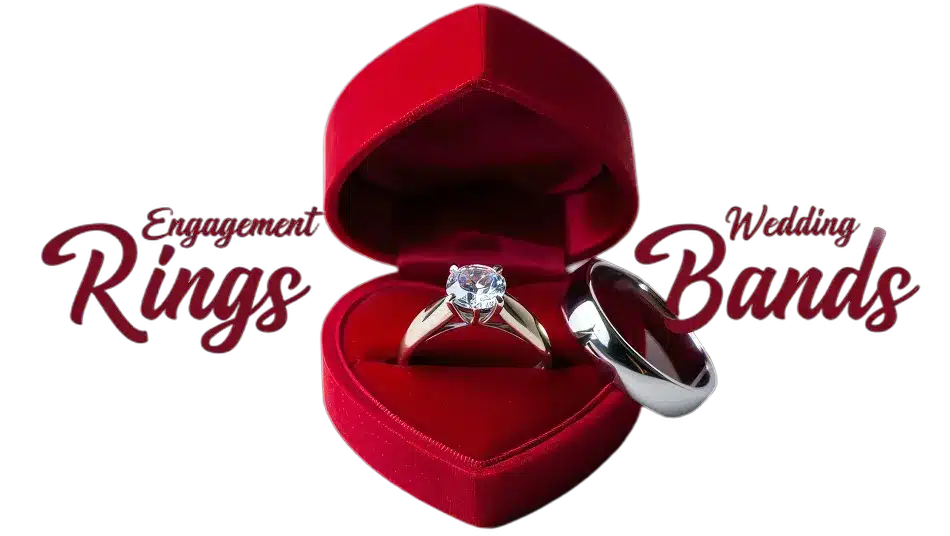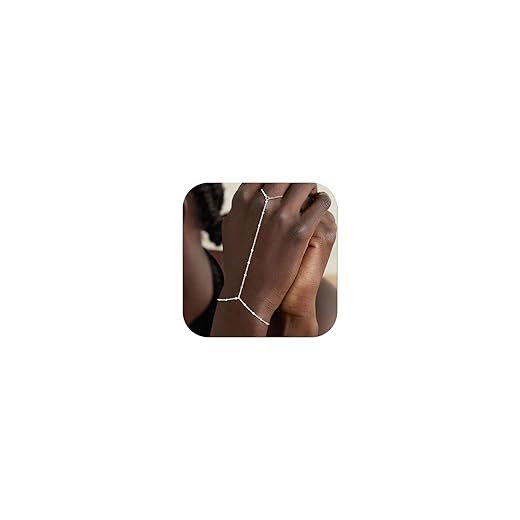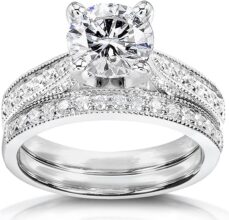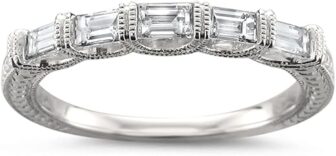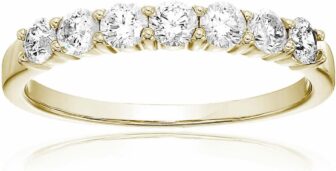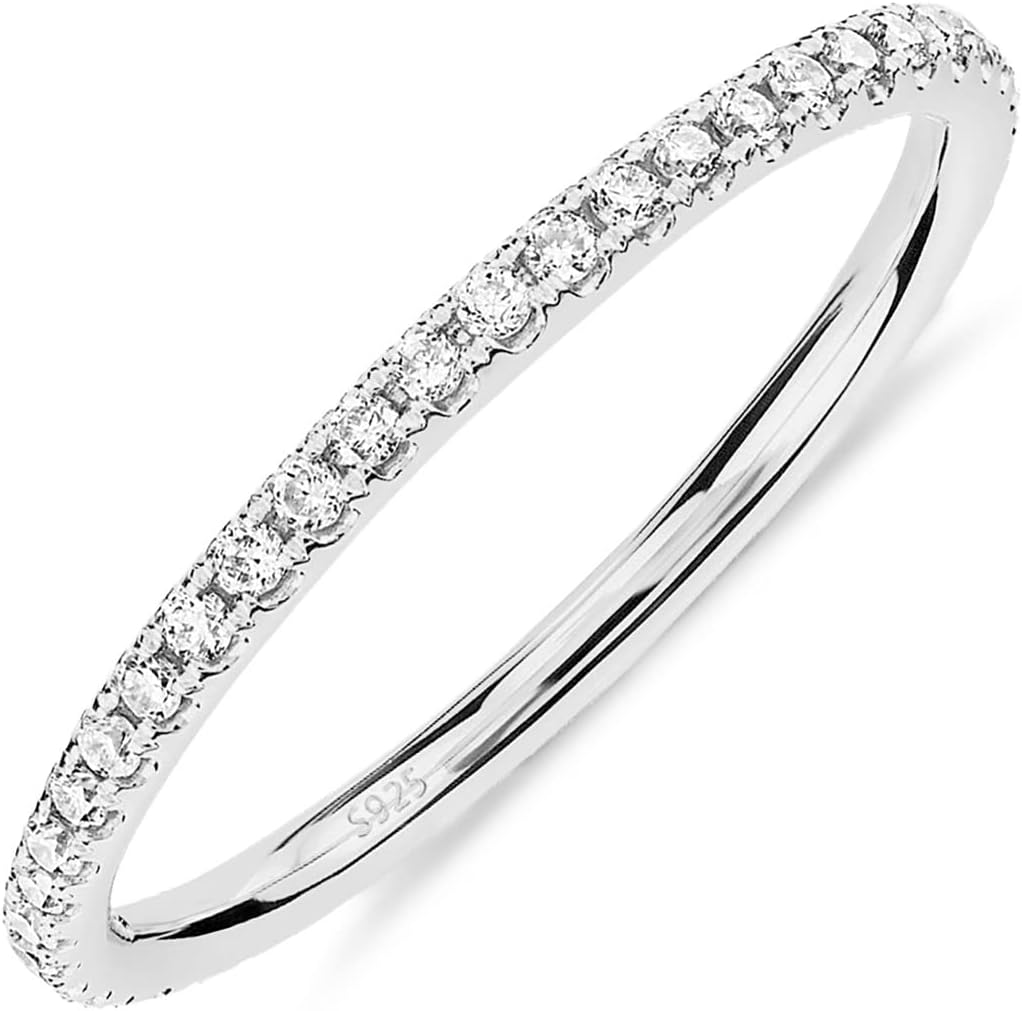
Understanding the Tradition Behind Your Wedding Ring
When it comes to celebrating love and commitment, wedding rings hold a special place in many cultures. They symbolize unity, fidelity, and the promises made between partners. But have you ever wondered why your wedding ring is traditionally worn on a specific finger? This article will guide you through the fascinating customs, meanings, and practices surrounding wedding rings.
We’ll explore the symbolism behind wedding rings and trace their historical roots in different societies. You’ll discover why the ring finger was chosen, along with the intriguing variations across cultures. Additionally, we’ll delve into modern trends in wedding ring placement and share tips for personalizing your experience. By the end, you’ll have a deeper appreciation for this timeless tradition and a clearer understanding of the finger that your wedding ring calls home.




The Symbolism of Wedding Rings
When you slip a wedding ring onto your finger, you’re not just accessorizing; you’re embracing a rich tapestry of meaning that resonates across generations. At its core, a wedding ring symbolizes love, commitment, and the unbreakable bond between partners. This small piece of jewelry encapsulates powerful feelings—think of it as a visual reminder of the promises you’ve made to one another.
Love and Unity
The circular shape of a wedding ring is particularly significant. It has no beginning or end, representing the eternal nature of love. When you exchange rings, you’re participating in a ritual that signifies your commitment to one another, forging an unbreakable connection. In many ways, the ring becomes a part of your identity as a partner, marking a significant pivot in your life journey together.
Fidelity and Trust
Moreover, wedding rings serve as a symbol of fidelity. By wearing your ring, you express a commitment not just in words but in actions. It’s a public display that says, “I am devoted to my partner.” This display of trust can deepen your bond, reinforcing the faith you place in each other.
Everyday Reminders
Wearing your wedding ring brings daily reminders of your promises and goals as a couple. Whether you’re tackling chores, navigating daily routines, or celebrating milestones, that glimmer on your finger can offer comfort and motivation—an ever-present sign of the love that anchors you.
As you ponder the deep symbolism behind these rings, it’s fascinating to consider how historical practices have shaped the custom of where to wear a wedding ring. Let’s dive into the historical roots of wedding ring placement in the next section, uncovering the traditions that have shaped this widely cherished practice.
The Historical Roots of Wedding Ring Placement
When it comes to where to wear your wedding ring, the history behind this tradition is as rich as the connection it represents. The placement of wedding rings has evolved over centuries, with influences from various cultures molding the customs we follow today.
The Romans and the “Vein of Love”
One of the earliest recorded traditions comes from the ancient Romans, who believed that the fourth finger of the left hand contained the “vena amoris,” or the “vein of love.” They thought this vein led directly to the heart, making it the perfect finger for a symbol of love and commitment. By wearing their wedding rings on this finger, couples felt they were literally and symbolically linking their love to their hearts.
Expanding Across Cultures
As time progressed, this practice spread beyond Rome. Many cultures adopted this belief, often modifying it to suit their own customs. For example:
As a result, the ring finger has often been viewed as the prime spot for marital insignia across various societies, each adapting the idea to fit their beliefs.
Changes Over Time
Interestingly, while the left hand is commonly favored in many Western cultures, some traditions advocate for the use of the right hand. For example, in several Eastern European countries, couples typically wear their wedding rings on their right hands, reflecting local customs and beliefs about marriage.
With such a deep historical context, it’s fascinating to see how these traditions have morphed and adapted over time. As we explore the reasons behind choosing the ring finger, the dynamic interplay between culture and custom continues to illuminate the significance of wedding rings. Let’s delve deeper into why the ring finger holds such a cherished place in the modern wedding tradition.
Why the Ring Finger?
You might be curious why the fourth finger on your left hand, commonly known as the ring finger, has become the traditional spot for wedding rings. This choice isn’t arbitrary; it’s steeped in cultural significance and historical beliefs.
The Symbolic Connection
The concept of the ring finger being special dates back to ancient times, primarily rooted in the idea that this finger contained the vena amoris. This Latin term translates to “vein of love,” suggesting a direct link to the heart. This belief can evoke a sense of romance—just imagine the sweet notion that your wedding ring symbolizes love flowing directly from your heart to your beloved.
A Universal Tradition
Around the world, many cultures have embraced the idea of wearing wedding rings on this particular finger, reinforcing its significance. Here are some compelling points about the ring finger’s symbolic stature:
Personal Stories and Traditions
Many people have personal stories tied to their ring finger. Perhaps your grandparents wore their wedding bands on this finger, or you’ve always imagined slipping the ring onto your partner’s hand during your ceremony, visualizing the warmth of the shared moment. Such stories not only strengthen your connection to the tradition but also create a rich narrative for your journey together.
As we continue exploring this topic, you might be intrigued to discover how cultural variations shape the understanding of where to wear your wedding ring. Let’s take a closer look at how different societies embrace this beautiful tradition!
Variations Across Cultures
The placement of wedding rings can differ vastly around the globe, reflecting unique cultural values and traditions. While many Western cultures predominantly choose the left hand for this symbolic piece of jewelry, other societies favor the right hand, demonstrating that love has many expressions shaped by local customs.
Right Hand vs. Left Hand
In several countries, particularly within Eastern Europe, tradition dictates that wedding rings are worn on the right hand. This practice often symbolizes the couple’s commitment in a slightly different light. For instance, in countries like Russia and Poland, the right hand is associated with social and marital obligations, while the left hand is traditionally reserved for personal choices.
A Tapestry of Traditions
Beyond the hands that rings are worn on, different cultures contribute their own flavors to the wedding ring tradition. Some practices to highlight include:
Modern Trends
In today’s globalized society, the blending of cultures often leads to interesting dynamic shifts. More couples are choosing rings that reflect not just their heritage but also their personal tastes. For instance, many modern couples mix elements from various traditions or go for unconventional styles that express their individuality.
This openness to variation illustrates how traditions are evolving, inviting you to be more inventive in your own wedding ring choices. As you contemplate what resonates most with you, let’s take a moment to explore how you can personalize your wedding ring experience, blending tradition with your unique love story.
Modern Trends in Wedding Ring Placement
As traditions surrounding wedding rings evolve, today’s couples are reimagining how and where they wear these symbols of love. With shifting values and a growing emphasis on individuality, modern trends are challenging long-standing norms, leading to fresh approaches that resonate with personal beliefs and lifestyles.
Alternative Placements
While the traditional ring finger still holds sway, many are opting for alternative placements that reflect their unique style. For instance:
Unconventional Styles
Couples today are also stepping away from traditional gold and diamond rings to explore materials and designs that resonate more with their personalities. Popular trends include:
Cultural and Gender Expansions
With the increasing recognition of diverse identities and partnerships, individuals are redefining what wedding bands mean for them. Gender-neutral designs and more inclusive sizing options allow everyone to participate in this beautiful tradition, regardless of how they identify.
Couples are also blending cultural traditions into their ring choices, reflecting a global perspective that honors differing customs.
This transformation illustrates how love can adapt and grow over time. As you consider how to personalize your wedding ring experience, your commitment can be beautifully expressed in ways that celebrate not just the bond you share, but also the individuality you both cherish. Next, let’s dive into how you can truly make your wedding rings reflective of your unique journey together!
Personalizing Your Wedding Ring Experience
When it comes to your wedding ring, the opportunity for personalization goes beyond mere aesthetics. It’s about creating a meaningful representation of your love story that resonates deeply with both you and your partner. Here’s how you can put your own unique spin on this timeless tradition.
Consider Your Beliefs and Values
The initial step in personalizing your wedding ring experience is reflecting on what you and your partner value most in your relationship. Whether that’s a commitment to sustainability, a nod to cultural traditions, or simply a preference for a specific style, your ring can embody these beliefs.
Some ways to bring your values into your ring choice include:
Crafting Your Unique Design
A truly personalized ring can be designed from scratch. Collaborating with a jeweler allows you to create a unique piece that reflects your shared journey.
Comfort Meets Style
Your wedding ring should not only symbolize your love but also feel comfortable to wear every day. Pay attention to:
Embracing choices that resonate with you will enhance your overall wedding ring experience. By blending tradition with your personal story, you can create a piece that’s as unique as your relationship. As you explore these personalized elements, remember that your journey doesn’t have to look like anyone else’s, which leads us to appreciate the beauty of your distinct choices.
Now, let’s steer toward recognizing how these personalizations can coexist with the overarching narrative of your love story.
Embracing Your Unique Choice
Choosing the right finger for your wedding ring transcends mere tradition; it’s a deeply personal decision that reflects your unique journey as a couple. Whether you follow the historical norms or embrace modern variations, what truly matters is the sentiment behind the ring and the commitment it represents.
As you navigate through the myriad of options, remember to celebrate your individuality. You have the freedom to express your love in a way that feels right for you. So, take a moment to consider not just where you place your ring, but what it symbolizes in your life together. Happy ring-wearing!
